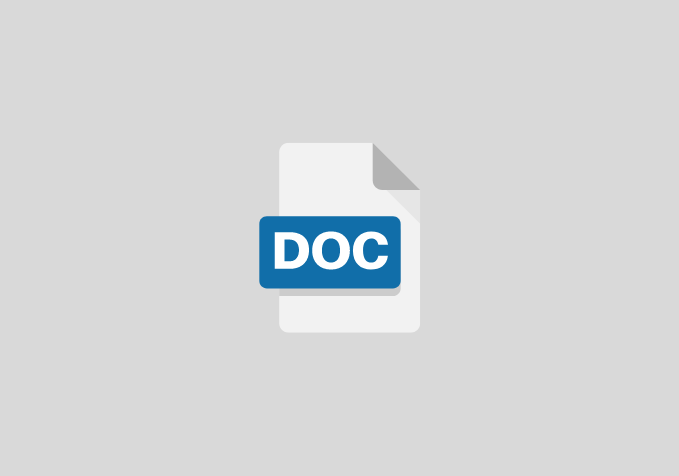Design and Implementation of Employee Information and Payroll System in a Manufacturing Set-Up
Chapter One
Aims and Objectives
This study aims to develop a computerized payroll system for a Manufacturing Organization. The specific objectives are to:
- design a computerized payroll system to replace the manual one.
- implement the designed payroll system in (i)
- evaluate the performance of the implemented payroll system in (ii) qualitatively
CHAPTER TWO
LITERATURE REVIEW
Overview of Payroll Systems
In organizations, there are several departments and each department has payroll section to manage payroll activities while some have a department that handles majorly the payroll. Irrespective of the department that handles the payroll, each section of the payroll has to perform necessary operations like data collection and preparation, entry, updates monitoring and reporting of data. With a system like this, payroll section would be able to keep a record of employees including their personnel data, pay slips, allowances and deductions etc. Net pay of each employee is calculated by this allowances and deductions mentioned according to the company rules. The individual pay slips are printed out as receipt or mailed to the employee. Pay bands, allowances, deductions, and tax information are updated if there is any amendment in salary structure. The proposed payroll system, MPS, will do the aforementioned.
Software Development Life Cycle Methodologies
Software development life cycle (SDLC) plays a vital role in developing a new or existing system as it describes the complete requirement of the system. It is used by developers and will be the basis during the testing phase. Common methodologies include waterfall, prototyping, iterative and incremental development, spiral development, rapid application development, extreme programming and various types of agile methodology.
V-Model
Nabil and Govardhan (2010) compared the five models of software engineering and defined V-Shaped life cycle as a sequential path of execution of processes. Each phase is completed before the next phase begins. Testing is emphasized in this method more than the waterfall model. The testing procedures are developed early in the life cycle before any coding is done, during each of the phases preceding implementation. Requirements begin the life cycle model just like the waterfall model. Before development is started, a system test plan is created. The test plan focuses on meeting the functionality specified in requirements gathering.
The high-level design phase focuses on system architecture and design. An integration test plan is created in this phase in order to test the pieces of the software systems ability to work together. However, the low-level design phase lies where the actual software components are designed, and unit tests are created in this phase as well. The implementation phase is, again, where all coding takes place. Once coding is complete, the path of execution continues up the right side of the V where the test plans developed earlier are now put to use.
CHAPTER THREE
Advertisements
METHODOLOGY
Design and Implementation Approach
After discussing the literature preview in the previous chapter, this chapter will discuss about the project planning phase and methodology use in the project. The sub topics is described and determined by the model to be used. Methodology is the function of selecting the objectives of the project and establishing the policies, procedures and programs necessary for achieving them. It involves planning for schedule development, budget development, project administration, leadership styles and conflict management. It is very important because project planning can eliminate or reduce uncertainty, improve efficiency of the operation, obtain a better understanding of the objective etc. The chapter will end with a questionnaire and analysis of the questionnaire.
Development Life Cycle of MPS
From the case study, every system has its own model to develop the system. Some developers use prototyping model, Spiral Model and so on. MPS is designed using V Model because it is simple and easy to use; each phase has specific deliverables, higher chance of success over the waterfall model due to the early development of test plans during the life cycle, works well for small projects where requirements are easily understood and so on.
CHAPTER FOUR
IMPLEMENTATION AND RESULTS
System Requirement Specification
Hardware Requirement Specifications:
CHAPTER FIVE
CONCLUSION AND RECOMMENDATION
Introduction
This chapter states the summary of the entire project and also makes recommendation(s) as to what ways and areas that it can be further developed. It also gives the conclusion on the entire design effort that the project represents.
Conclusion
The main aim of carrying out the project is to design, develop and implement a comprehensive and expansible payroll for a typical Manufacturing Company called MPS. In conclusion, the automated payroll system, MPS, is a great improvement over the manual payroll system. It is easier to operate; it saves time, reduces or eradicates fatigue when inputting an employee’s identification into the database of the payroll system and improves the method of checking an employee’s statistics or report sheet without going through file. It also improves the method of knowing how money is being spent and paid to the employee. It also helps in knowing how many employees are in the company and also their bio data.
Recommendation on Future Improvement
There always room for improvement. The payroll software created MPS can also be improved. This is majorly because we had to create it within a limited time. With more time, the software can be improved to include more security measure and also add different types of users. Also, the software can be made network-enabled and web-enabled.
REFERENCES
- Nabil Mohammed Ali Munassar and A. Govardhan (2010). A Comparison Between Five
- Models of Software Engineering.
- Gurlal Singh (2014). Implementation and Development of a Proposed Payroll System.
- Poonamdeep Kaur, Dr. Dinesh Grover (2012). Computer Based Payroll System Implementation
- for E-Governance at Punjab Agricultural University
- Asmau Sani Mohammed, Hamman W. Samuel, Malachy Khanoba, Osaetin Evbuoma (2007). Project Report On Payroll System.
- Guillermo L. Taboada, Sabela Ramos, Roberto R. Exp´osito, Juan Touri˜no, Ram´on Doallo (2011). Java in the High Performance Computing Arena: Research, Practice and Experience.


